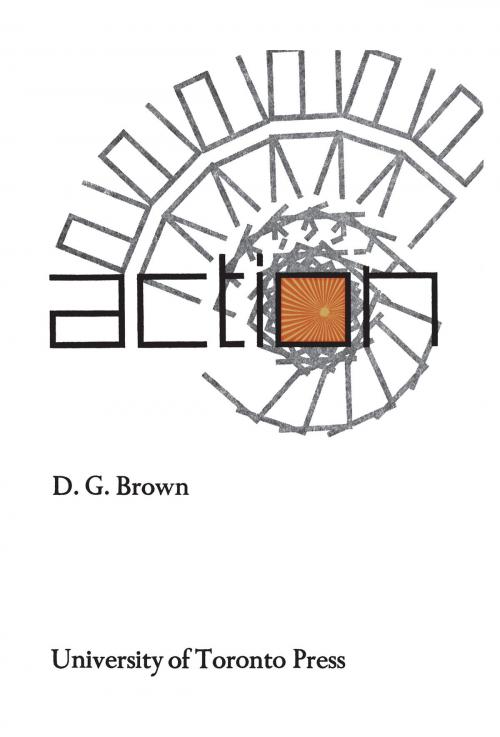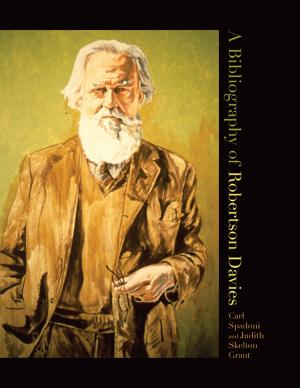| Author: | D. G. Brown | ISBN: | 9781442650961 |
| Publisher: | University of Toronto Press, Scholarly Publishing Division | Publication: | December 15, 1968 |
| Imprint: | Language: | English |
| Author: | D. G. Brown |
| ISBN: | 9781442650961 |
| Publisher: | University of Toronto Press, Scholarly Publishing Division |
| Publication: | December 15, 1968 |
| Imprint: | |
| Language: | English |
Professor Brown in this volume discusses one of the most difficult questions in metaphysics, “what is action?” His analysis proceeds along three main lines of thought: the point of view of the agent, the primacy of inanimate action, and the pervasiveness of explanatory insight in the description of action. In the spirit of recent work on practical reasoning, he takes the central fact about human action to be the existence of the point of view, and considers the agent’s relation to his own body, Professor Brown argues that the concept of human action is best understood through that of inanimate action, such as the action of wind on trees or an axe on wood. His analysis takes inanimate action as fundamental, and defends it against the popular theory that it is an anthropomorphic projection. Human action is indeed unique. But it is also Professor Brown’s thesis that the classical empiricist search for the brute fact of our own agency yields no more than incidental insights into its nature; introspection does not replace the analysis of human action.
The analysis in this essay caters for inanimate action as well as for the uniqueness of human action. The key to an analysis complex enough to cover both is the notion of “attributability,” which Professor Brown regards as providing “an Aristotelian extension of a Humean approach to causation.” Explanation by reference to the soul exploits the point of view of the rational agent. In this way, both human and inanimate action are exhibited as natural phenomena the descriptions of which are pervaded by explanatory insight.
The book as a whole gives an account of action in which the peculiarities of human action find their place in nature. It does not enter on questions of ethics, but remains with concepts common to morality, psychology, and history. There are incidental discussions of deliberation, psychokinesis, casual necessity, the agent’s knowledge of his action, and responsibility.
Here is a controversial theory of action supported by careful argument. Professor Brown’s writing is both ambitious in scope and attentive to conceptual detail, and offers a valuable contribution to one of the liveliest contemporary debates in philosophy.
Professor Brown in this volume discusses one of the most difficult questions in metaphysics, “what is action?” His analysis proceeds along three main lines of thought: the point of view of the agent, the primacy of inanimate action, and the pervasiveness of explanatory insight in the description of action. In the spirit of recent work on practical reasoning, he takes the central fact about human action to be the existence of the point of view, and considers the agent’s relation to his own body, Professor Brown argues that the concept of human action is best understood through that of inanimate action, such as the action of wind on trees or an axe on wood. His analysis takes inanimate action as fundamental, and defends it against the popular theory that it is an anthropomorphic projection. Human action is indeed unique. But it is also Professor Brown’s thesis that the classical empiricist search for the brute fact of our own agency yields no more than incidental insights into its nature; introspection does not replace the analysis of human action.
The analysis in this essay caters for inanimate action as well as for the uniqueness of human action. The key to an analysis complex enough to cover both is the notion of “attributability,” which Professor Brown regards as providing “an Aristotelian extension of a Humean approach to causation.” Explanation by reference to the soul exploits the point of view of the rational agent. In this way, both human and inanimate action are exhibited as natural phenomena the descriptions of which are pervaded by explanatory insight.
The book as a whole gives an account of action in which the peculiarities of human action find their place in nature. It does not enter on questions of ethics, but remains with concepts common to morality, psychology, and history. There are incidental discussions of deliberation, psychokinesis, casual necessity, the agent’s knowledge of his action, and responsibility.
Here is a controversial theory of action supported by careful argument. Professor Brown’s writing is both ambitious in scope and attentive to conceptual detail, and offers a valuable contribution to one of the liveliest contemporary debates in philosophy.















